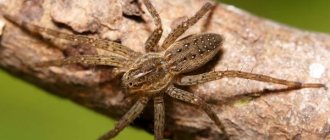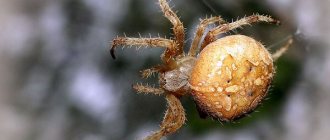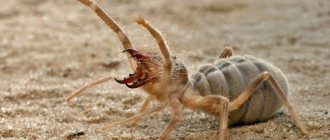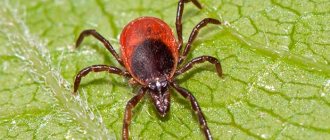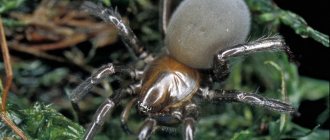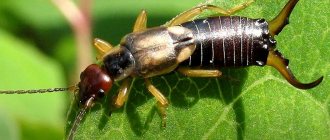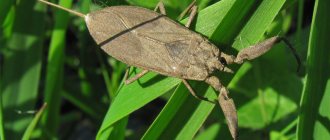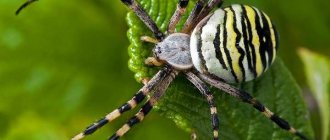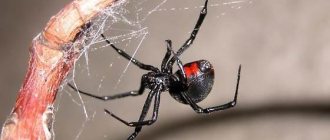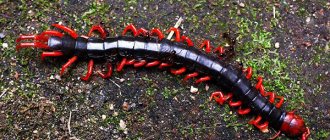- Wild animals
- >>
- Arachnids
The water spider , although very small and harmless in appearance, is poisonous. It is notable for the fact that it lives under water, for which it builds a dome with air. Because of this, it received its second name, silver – small droplets of water on its hairs, refracting through the air of the dome, glitter in the sun and create a silvery glow.
Origin of the species and description
Photo: Water spider
Arachnids arose a very long time ago - the oldest fossil species are known in Devonian deposits, which is 400 million years BC. It was they who came to land first, and then their main distinguishing feature took shape - the arachnoid apparatus, and according to the assumptions of some scientists, it could even have appeared in the water.
The degree of development of a spider, its place on the evolutionary ladder is largely determined by the use of the web - the most primitive species use it only for cocoons, just as their most distant ancestors did. As spiders developed, they learned to use the web in other ways: to make nests, networks, and signaling systems from it.
Video: Water spider
According to paleoantologists, it was the invention of the hunting web by spiders of the Jurassic period, along with the appearance of flowering plants, that forced insects to acquire wings and rise into the air - they sought to escape from the abundance of webs placed by spiders.
Spiders turned out to be very tenacious and during all five great extinctions, when most of the species disappeared from the face of the Earth, they managed not only to survive, but also to change relatively little. However, modern species of spiders, including the silverback, originated relatively recently: most of them are from 5 to 35 million years old, some even less.
Gradually, the spiders developed, so that their initially segmented organs began to function as one whole over time, the abdomen also ceased to be segmented, the coherence of movements and the speed of reactions increased. But the evolution of most genera and species of spiders has not yet been studied in detail; this process continues.
This also applies to the water spider - it is not yet known for certain when they originated, as well as from whom. It is almost certain that they became an example of land arachnids returning to the sea. This species was described by Karl Alexander Clerk in 1757, received the name Argyroneta aquatica and turned out to be the only one in the genus.
Interesting fact: Spiders are incredibly tenacious creatures - for example, after the eruption of the Krakatoa volcano, when, as it seemed, the lava destroyed all living things, people arriving on the island were the first to meet a spider, spinning a web right in the middle of the lifeless desert.
Not enough books? Read it!
The island where Mount Etna is located?
Virgil believed that the Cyclops lived in a mountain on the island of Sicily. And this mountain is the world-famous volcano Etna. In myths it was said that the goddess Athena, in the battle of the gods with the giants, crushed the immortal Enceladus with a mountain. From time to time he tries to free himself.
Who was the first world chess champion
Steinitz was born on May 14, 1836 in Prague, and died on August 12, 1900 in New York. Wilhelm became acquainted with chess at the age of 12, then he did not even suspect that his entire future life would be connected with it. In 1886, at the age of 50, Steinitz.
Alvero flooring store where you can purchase Haro laminate.
Appearance and features
Photo: Water spider, also known as silver spider
Its structure differs little from ordinary spiders living on land: it has four jaws, eight eyes and eight legs. The longest of the legs are located at the edges: the front ones are adapted for grabbing food, the back ones for swimming - and silverfish are quite good at doing this.
Measuring only 12-16mm in length, females are usually towards the lower end of the range and males towards the upper end. This is rare for spiders; females are usually larger. As a result, female silverfish do not eat males, as in many other species of spiders. They also differ in the shape of their abdomen: the female has a rounded one, and the male is much more elongated.
To breathe, it forms an air-filled bubble around itself. When the air runs out, it comes up for more. In addition, in order to breathe, she has another device - hairs on her abdomen lubricated with a waterproof substance.
With their help, a lot of air is also retained, and when the spider emerges for a new bubble, it at the same time replenishes the supply of air retained by the hairs. Thanks to this, it feels great in the water, although it has to float to the surface dozens of times a day.
The color of a water spider can be either yellow-gray or yellow-brown. In any case, a young spider is light in color, and the older it gets, the darker it becomes. At the end of his life he turns out to be almost completely black - this makes it very easy to roughly determine his age.
Literature
- N. M. Knipovich.
Water spider // Encyclopedic Dictionary of Brockhaus and Efron: in 86 volumes (82 volumes and 4 additional). - St. Petersburg, 1890-1907.
| Dictionaries and encyclopedias |
|
| Taxonomy |
|
| In bibliographic catalogs |
|
Where does the water spider live?
Photo: Water spider in Russia
It prefers a temperate climate, and lives in the territories of Europe and Asia located in it - from the Atlantic Ocean to the Pacific. It prefers to live in stagnant water; it is also acceptable for it to flow, but slowly, which means its main habitats are rivers, lakes and ponds. He especially loves abandoned, quiet places, preferably with clean water.
It is also desirable that the reservoir be abundantly overgrown with vegetation - the more there is, the higher the chance that silverfish live in it, and if they do, then most often there are many of them at once, although each one makes its own separate nest. Externally, the spider's home can either resemble a thimble or a small bell - it is woven from cobwebs and attached to stones at the bottom.
It is very difficult to notice because it is almost transparent. In addition, it does not allow air to pass through. The spider spends most of its time in its underwater nest, especially for females - it is reliable and safe, because signal threads stretch from it in all directions and, if there is a living creature nearby, the spider will immediately know about it.
Sometimes he builds several nests of different shapes. Silverfish can be kept as pets. This is quite rare, but it happens, because they can be interesting with their nests and silver glow. One spider can be kept in a small container, but several will require a full-fledged aquarium.
They do not conflict with each other, but if they are underfed, they can enter into a fight, after which the winner will eat the loser. They adapt well in captivity, but they need to arrange an environment of aquatic plants, and so that some of them appear on the surface (or throw branches) - this is necessary so that the spiders get out for air.
Although they are poisonous, they are not inclined to attack people; this is only possible if the spider defends itself - such situations can occur when a silverfish is caught with a fish, and it thinks that it is being attacked. Usually it tries to escape from people, and spiders that are accustomed to living in captivity react calmly to their presence.
Now you know where the water spider lives. Let's see what he eats.
How do they swim?
Almost all spiders are terrestrial predators; the silverback is a pleasant exception to the rule. It's all about the unique anatomy. The abdomen, covered with hairs and special fat, has the ability to accumulate air bubbles. As a result, a kind of air cushion is formed between the body and the hairs Due to this, the silverfish feels great under water. She needs to come up regularly to replenish her air. Fat is a secretion of spider glands that has changed in composition.
There is a funny feature that allows you to distinguish the gender of the silverback spider. To do this, you need to look at the bubble around the body: the male’s upper abdomen is free of air. The female has a bubble around her entire body and swims upside down. Males often swim horizontally and use their legs as oars. The water spider is able to cover a distance of two centimeters in a minute. This is a decent distance for such a baby.
What does a water spider eat?
Photo: Water spider
The diet includes small animals that live in water, these are:
- aquatic insects;
- larvae;
- water donkeys;
- flies;
- bloodworm;
- small crustaceans;
- fish fry.
When attacking, she entangles the victim in a web to hinder its movements, plunges chelicerae into it and injects poison. After the prey dies and stops resisting, it introduces a digestive secretion - with its help, the tissues liquefy, and it becomes easy for the silverfish to suck out all the nutrients from them.
In addition to hunting, they drag away and digest already dead insects floating on the surface of the reservoir - flies, mosquitoes, and so on. Most often, in captivity, the water spider is fed just these; it can also feed on cockroaches. Using a web, it drags prey into its dome and eats it there.
To do this, he lies on his back and treats the food with a digestive enzyme, and when it softens enough, he absorbs it into himself, then removes what turned out to be inedible from the nest - it is kept clean. Silverfish love to eat water burros most of all.
They are useful in the ecosystem because they destroy the larvae of many harmful insects, for example, mosquitoes, preventing them from overproducing. But they can also cause harm, because they hunt fish fry. However, their prey is the weakest fry, so they play the role of natural breeders and do not cause much harm to the fish population.
Interesting fact: Although the water spider has many eyes, when hunting it most of all does not rely on them, but on its web, with the help of which it can sense every movement of the prey.
Varieties
The most common species in our country is Clubionafallax - dropsy, silverweed.
This species has perfectly adapted to life in shallow stagnant waters, building bell-shaped domes for itself and its offspring. Each dwelling is intended for a certain phase of life - molting, wintering, breeding.
Males are 2-3 millimeters larger than females, look identical in appearance, and have a slightly darker body color.
Hydrachna cruenta Mull
A small red spider of the genus Araneina, also called a mite. It feeds on larvae and small crustaceans. The body is round, the spider looks like a small ball with short legs.
Attaches eggs to the foliage of aquatic plants, braiding them with an adhesive solution.
Dolomedes
This species is a representative of surface spiders that run along the surface at high speed. They prefer the surface of the water to dry land; when in danger, they easily dive into the water. The body size of females reaches 22 millimeters, males are significantly smaller (13 millimeters).
It can live on the shore, where it drags caught prey and eats it. It may not make shelters; it simply hides in the thickets of grass.
Its lifestyle can be called semi-aquatic. Lives near ponds and swamps, loves wet areas of meadows, forest thickets, and penetrates gardens.
Dolomedes can feed on insects caught in the air, aquatic inhabitants - fry, crustaceans. It kills the victim very quickly, then savors the food for several hours.
Features of character and lifestyle
Photo: Funnel-web water spider
The silverfish goes out hunting at night and rests most of the day. Females rarely leave the nest except to replenish their air supply - perhaps for hunting. But even she is often led passively, barely leaning out of the nest, and waiting until some prey is nearby.
Males are much more active and can move away from the nest at a distance of up to ten meters in search of food. Although most often they also remain within a meter or two, under the protection of their networks, ready to react to signals emanating from them at any moment.
They can overwinter either in cocoons, which they weave themselves, or in empty mollusk shells. They prepare their silverfish for winter in a very interesting way: they draw air inside until they float, then attach them to the duckweed and crawl inside the shell.
When the shell is ready, you can go into hibernation - it will be warm enough inside for the water spider to survive even in the most severe cold. Such floating shells can be seen in the autumn months - this is a sure sign that silverfish live in the reservoir, since without their help the shells rarely float to the surface.
When winter comes, the duckweed falls off, and the shell goes to the bottom along with it, but thanks to the dense web, the water does not flood it, so the spider successfully overwinters. In the spring, the plant floats up, and with it the shell; sensing the warmth, the silverfish wakes up and climbs out.
If the summer is dry and the reservoir is dry, then water spiders simply spin cocoons and hide in them from the heat, waiting until they find themselves in the water again. Or they can fly away on a web to other lands, in search of a larger body of water that has never dried up. In any case, they are not in danger of death in such situations.
Notes
- Annotated list of rare and endangered species of invertebrate animals, specially protected within Russia // 2003* Russia* Red List of Specially Protected Rare and Endangered Animals and Plants. (2nd issue). Part 2. Invertebrate animals (Red Book Bulletin, 2/2004 (2008)) / rep. ed. V. E. Prisyazhnyuk. - M.: Red Book Laboratory of the All-Russian Research Institute for Nature Conservation, 2004 (2008). - P. 118. - 512 p. — ISBN 978-5-9243-0158-7 Full text Archived copy dated October 24, 2022 on the Wayback Machine
- Lange A. B. Subtype Chelicerata // Animal Life. In 7 volumes/ch. ed. V. E. Sokolov. — 2nd ed., revised. - M.: Education, 1984. - T. 3: Arthropods: trilobites, chelicerates, trachein-breathing. Onychophora / ed. M. S. Gilyarova, F. N. Pravdina. - P. 68. - 463 p. : ill.
- I. I. Akimushkin.
Patent for a diving bell // Insects. Spiders. Pets. — 4th ed. - M.: Mysl, 1995. - T. 3. - P. 219-220. - (Animal world). — 15,000 copies. — ISBN 5-244-00806-4. - Microcosmos (film, 1996), 40 minutes
Social structure and reproduction
Photo: Water spider in Russia
They live in groups, although each individual lives in its own nest at a short distance from the others. They do not conflict with each other, but in rare cases, cases of cannibalism are known. This is also possible when kept in captivity, if there are too many silverfish living in one aquarium.
Both individuals of the same sex and those of different sexes can live nearby, since female water spiders are not inclined to eat males. Spiders often live in pairs, placing nests in close proximity to each other. Females reproduce in the nest.
At the onset of warm spring, the female bearing eggs lays a clutch in her nest: usually there are about 30-40 eggs, sometimes much more - over one and a half hundred. She separates the clutch from the rest of the nest with a partition and then protects it from intrusion, practically without leaving it.
After a few weeks, spiderlings emerge from the eggs - they are developed in the same way as adults, only smaller. The mother spider continues to take care of them until they leave her - this happens quickly, the spiders grow up in just two to three weeks. After this, they build their own nest, most often in the same body of water.
Although sometimes they can travel, for example, if there are already a lot of silverfish where they were born. Then they climb onto the plant, let out a thread and fly on it with the wind until they reach another body of water - and if that doesn’t come, they can fly further.
Interesting fact: When kept in captivity, small spiders must be moved out, because otherwise there will be too little space in it, and they may even be eaten by their own mother. This does not happen under natural conditions.
Natural enemies of water spiders
Photo: Water spider, or silver spider
Although they themselves are dexterous and dangerous predators for small aquatic life, they also have many enemies. There are almost no threats in the nest, but when they get out to hunt, they themselves risk becoming prey - sometimes this happens, and the nest loses its owner.
Among the dangerous enemies:
- birds;
- snakes;
- frogs;
- lizards;
- fish;
- dragonflies and other predatory aquatic insects.
Still, they face much less danger than ordinary spiders, primarily due to the fact that they live in water. Here, numerous land predators cannot reach them, but they can be eaten by fish - and this threat should not be underestimated, because even a nest does not always protect against it.
And yet this is reliable protection in many cases; the system of threads extending from it is no less important - thanks to them, the silverfish not only hunts, but also learns about the threat in a timely manner. Therefore, the main chance for predators to take this spider by surprise and catch it is when it itself is hunting, at these moments it is most defenseless.
Often frogs take advantage of this, and yet, it cannot be said that so many silverfish end their lives in the teeth of predators - usually their life is relatively calm, which is why they are not ready to exchange their pond for a much more disturbing life on land.
Interesting fact: Silverfish venom is quite toxic, but not dangerous to humans - usually there is redness or swelling at the site of the bite, and that’s all. A child or person with a weakened immune system may feel dizzy, feel unwell, and feel nauseous. In any case, everything will pass in a day or two.
